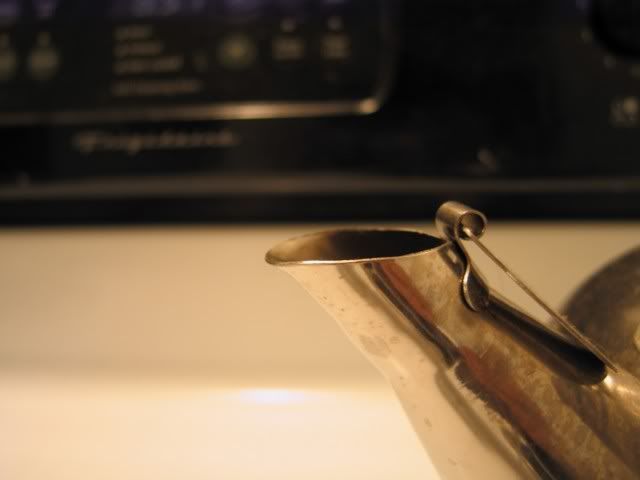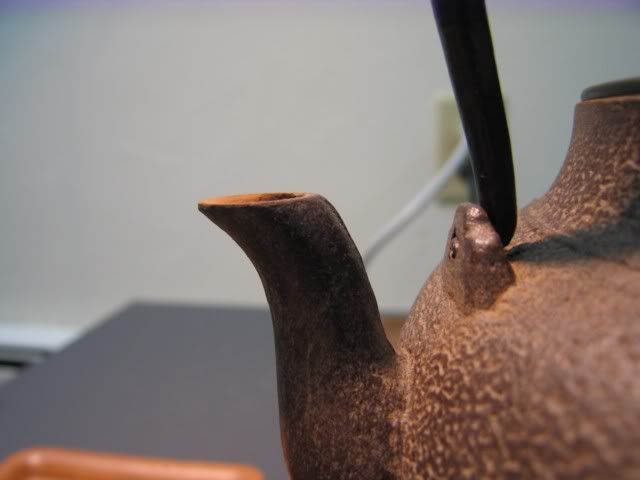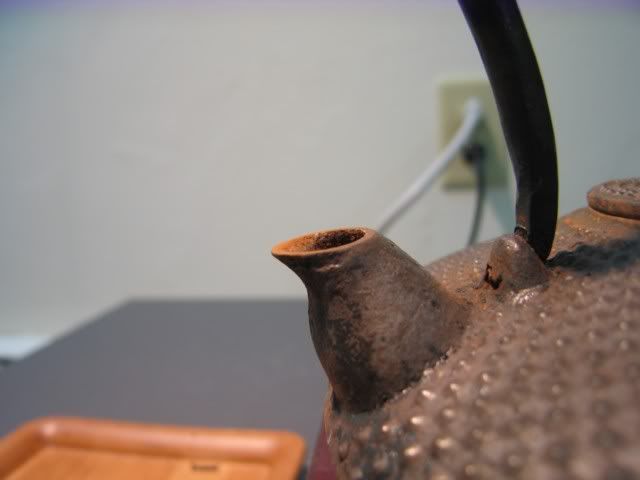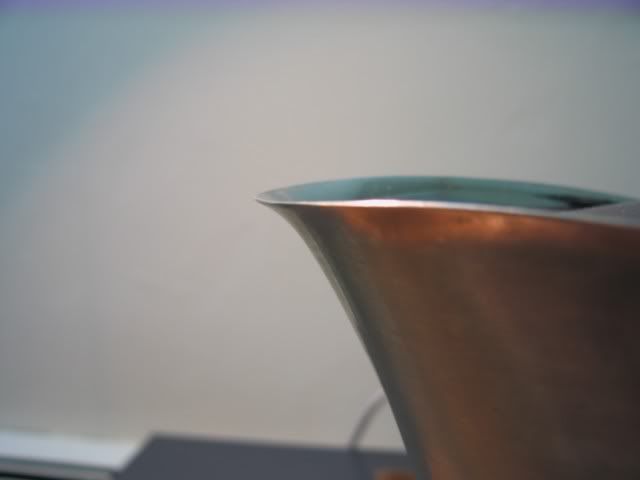On this recent trip to Boston I made tea twice at somebody else’s place, and at both places I am reminded of how tied I am to my own tea setup, how my habits of tea making are determined by the teaware I use. It’s not the yixing pots or the cups or even the tea that really determined my tea making. It’s one specific thing of my kettle — the spout.
This might sound a little silly, but the spout of a kettle really determines how it pours, and that in turn greatly affects how I make tea. At the first tea meeting, I kept overshooting my pot (easily portable) when I tried to pour water into it. The spout on the water kettle there makes sure the water comes out at an angle that is not the same as the kettles I use, and thus I kept misjudging the first few times I poured. At the second place there was no such problem, although I am still reminded of how much I miss my kettle and my whole setup at home.
Kettle spouts come in all shapes and sizes. These are the ones I have at home




The one on my current tetsubin is the second, and not surprisingly, it gives me the most control in the speed of pouring. The last one is my electric kettle. It looks a little too wide, although it doesn’t drip at all, even though it seems like it might. It actually can pour a very fine pour, but it takes quite a bit of practice. The first is a spout on a simple stainless steel kettle. It does the job, but very hard to pour a fine pour of just a little water. The third is the flat tetsubin that I now have as a spare. It pours fine, except that it does drip a little (shorter spout and less tapering) and also is quirky because of the level of water vis-a-vis the level of the spout. Over time, I tihnk I am used to the higher levels of control that my kettles’ spout affords me, and also the perculiar ways they are shaped. The comforts of home, in this case, includes a familiarity with my teaware when I make my tea, and coming back to it makes me very happy.

4 responses so far ↓
Anonymous // March 11, 2008 at 10:07 am |
I am noticing the rust in the spouts of your tetsubins. As I understand it, tetsubins were originally kettles, and were unlined, as yours appear to be. Today, many tetsubins have a baked-on ceramic liner and are meant to be used as teapots, not kettles; and come with warnings to not use them on the stovetop (I guess the expansion of the metal would crack the ceramic lining). Is this consistant with what you have learned? Does the water acquire an iron taste as a result of the tetsubin? (I have noticed that slightly iron water actually brews a better cup of tea – the comparison is between the very slightly iron well water I have at home and some mountain spring water from a spring not far away – the well water has proven better at making tea every time I’ve experimented.)
MarshalN // March 11, 2008 at 2:02 pm |
Neither of my tetsubins have an enamel lining inside, and I won’t use one that does. They break eventually anyway.
I think the water does acquire some iron taste when you boil it, although how much there is depends on how sensitive you are. Personally, I find the teas come out softer now than before when I am using my electric kettle.
Vivian Gunter // June 24, 2011 at 1:57 pm |
I noticed that you made reference to a Japanese tea kettle with a little round jade ball for the top handle… I am researching a hand hammered silver tea kettle that my Mother got during the occupation of Japan after WWII (She was the second wife to join her husband there during the occupation)… It is a lovely pot… The handle is wrapped with bamboo? rattan?.. The round jade ball on the lid is red… Do you know anything about this particular kettle? My mother is entering a nursing home and is going to have to sell some of her accumulated treasures and we have no idea what the value of these items might be.. Thanks so much! Vivian
MarshalN // June 24, 2011 at 7:47 pm |
This is probably best done with email and some pictures